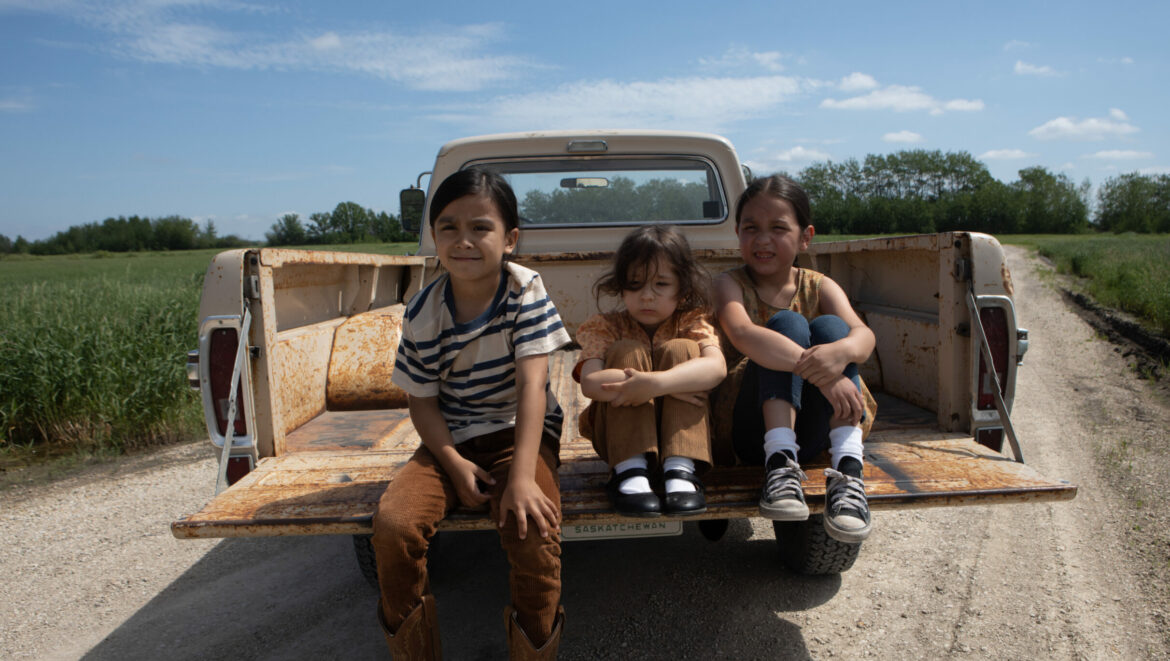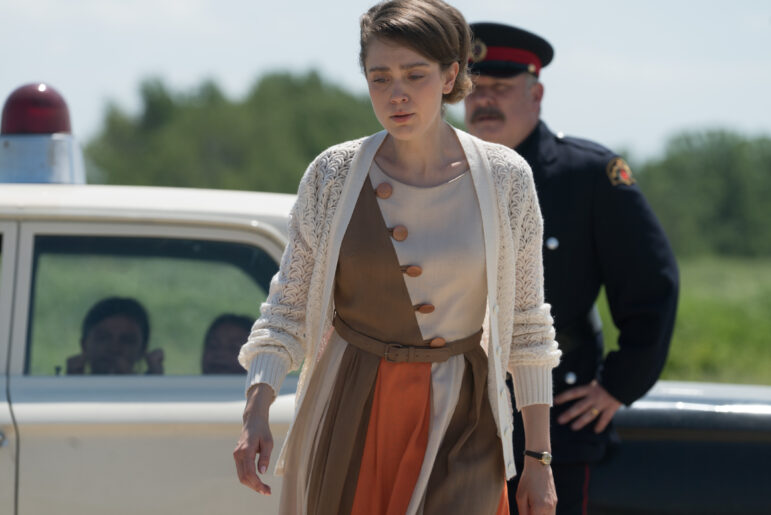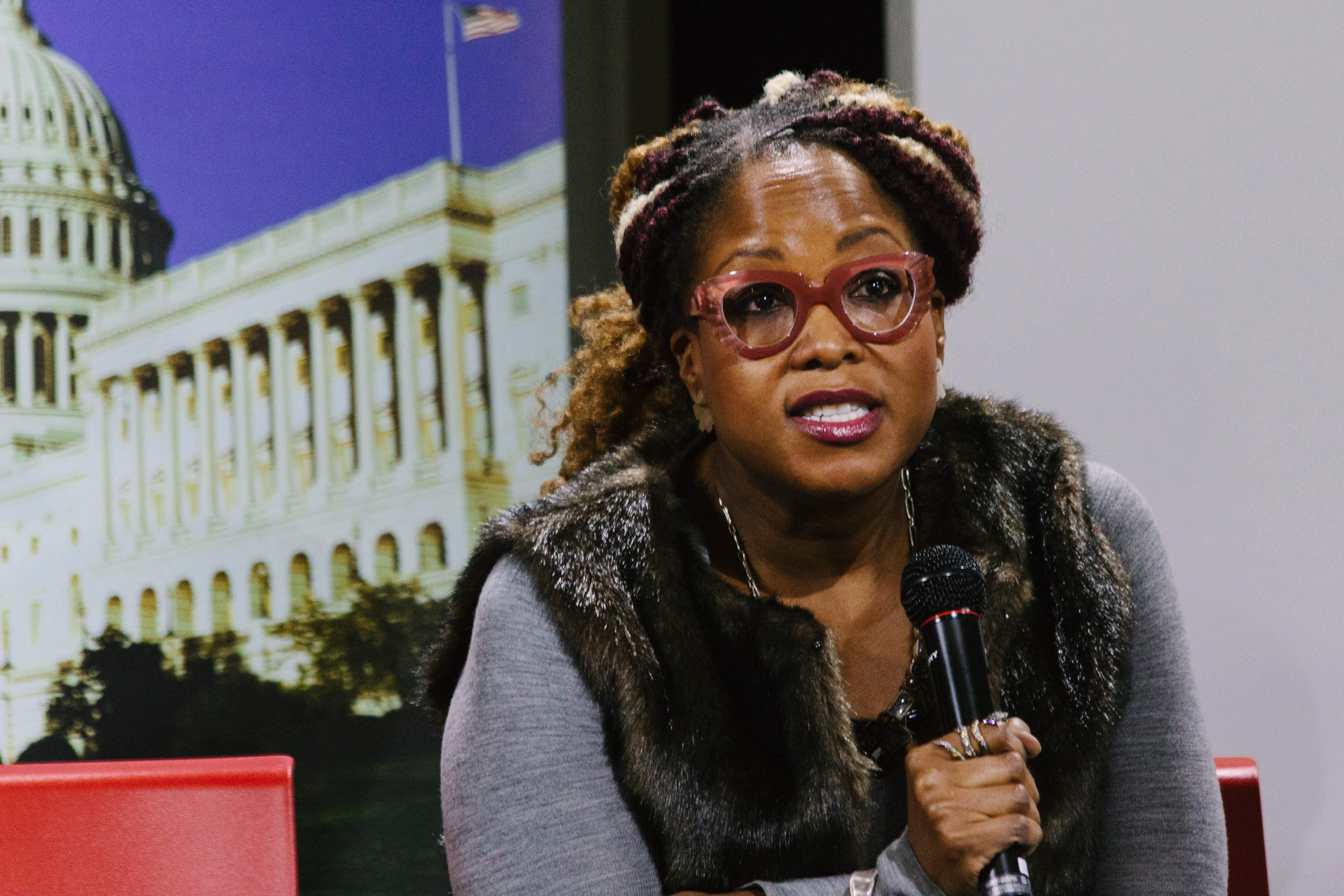‘Little Bird’ brings unique story of Indigenous identity to PBS

Courtesy of Steve Ackerman
Young Bezhig (Keris Hope Hill), right, with her siblings Niizh (Gideon Starr), left, and Dora (Charlotte Cutler).
A Canadian drama series acquired by PBS for digital streaming release and broadcast is the centerpiece of a strategy to attract younger viewers with a story of Indigenous identity.
Little Bird, a six-episode series released for streaming and broadcast this month, depicts the painful legacy of the Canadian government’s policy authorizing welfare workers to remove children of First Nations people from their families. The story centers on Bezhig Little Bird (Darla Contois), who was taken from her parents at age 5, adopted by a Jewish family in Montreal and renamed Esther Rosenblum. Years later, after completing law school, she leaves behind her life in Montreal in an attempt to reconnect with her birth family and heritage in Saskatchewan.
The series was co-created by showrunner Jennifer Podemski and head writer Hannah Moscovitch. It premiered in Canada this spring on Crave, a subscription video service, and the Aboriginal People’s Television Network. PBS Distribution assisted with the acquisition, which includes Wanna Icipus Kupi (Coming Home), a companion documentary that provides historical context on the “Sixties Scoop” in which Indigenous children in Canada were put into foster care and placed in adoptions with white families. The scoop began in the 1950s and continued into the 1980s.
PBS unveiled the series and companion program in August, highlighting Little Bird as an expansion of its lineup of dramas and programs highlighting Native American Heritage Month. Episodes began releasing Oct. 14 on PBS Passport, the streaming service for station members, and stations have scheduled broadcasts at times of their own choosing.
Maria Bruno Ruiz, PBS VP of program content strategy and scheduling, was immediately interested in acquiring Little Bird when she learned about the series early this year, she said in an email. She collaborates with colleagues from PBSD on acquisitions and said the team was excited by the drama’s “authentic representation both in front and behind the camera.”
“We felt it provided a unique way to bring this story to new audiences,” she added.
‘Fictional representation of my own community’
Key members of Little Bird’s creative team are of First Nations heritage. Podemski is of Anishinaabe, Leni Lenape and Métis descent on her mother’s side. Director Elle-Maija Tailfeathers is a member of the Kainai First Nation (Blood Tribe, Blackfoot Confederacy) as well as Sámi from Norway. Lead actor Darla Contois is from the Misipawistik Cree Nation in Manitoba, Canada.
Little Bird isn’t based on a true story, but its creators were inspired by real events of family separations carried out under Saskatchewan’s Adopt Indian Métis program, according to Podemski. Indigenous children in the province were removed from their families and photographed for advertisements promoting adoption.
“We focused on this particular program because I wanted the show to take place in a fictional representation of my own community,” Podemski said. “There was a pipeline of dismantling families, of getting [children] from their families into foster care and then up for adoption somewhere in Canada, the United States and sometimes even Europe.”
The New York Times “What to Watch” newsletter recommended Little Bird for viewers who “want to cry.” In highlighting the drama’s digital release in her Oct. 13 newsletter, TV critic Margaret Lyons advised viewers to “brace yourself for a profoundly sad and infuriating ride.”
The narratives of Bezhig’s childhood and her search for the truth as an adult are expertly split. The opening moments of Little Bird, where a young Bezhig plays with her mother and siblings, have the quiet beauty and power of a Terrence Malick movie. She’s at one with nature and living a simple, peaceful and satisfying life. At the same time, Contois’ subtle portrayal of Bezhig’s inner torment as she grows up is always present. You can’t help but become emotionally invested and feel infuriated as she struggles for the answers that she clearly deserves.

The scenes in which young Bezhig is taken from her family are heart-wrenching. After her brother Niizh shoots his slingshot at a police car driving down the road, officers and child welfare service officers inspect her family’s home and find the conditions inadequate for children. Despite the mother’s pleas, the children are taken to an orphanage. When Bezhig’s father tries to fight back against the police, he is beaten so badly that he ends up in the hospital.
Potential to reach new viewers
Programmers believe Little Bird can attract and engage younger audiences, especially as a streaming experience. They also see the series’ PBS release as a new opportunity to experiment with audience development strategies and donor acquisition via Passport.
“We’re seeing our audience shift and migrate,” said Jessica Turk, PD of Nashville Public Television. “It’s not that we’ve lost the audience, they’ve just moved. The audience we serve online is different to the one we serve on linear, which is 65-plus.”
“In some ways, we’re operating two businesses — legacy and startup,” Turk added. “It’s about figuring out how best to use the platforms we have access to.”
In Nashville, that means leaning into Little Bird’s potential to build online viewership. “[Little Bird] has a social consciousness that can really appeal to younger viewers,” Turk said. “My promotional efforts are focused on it as a streaming property that is available to watch.” Broadcast audiences in Nashville can catch Little Bird Sunday nights at 11 p.m., a time slot where international dramas such as Seaside Hotel have fared well, Turk said.
“Everybody has a mission to attract young, newer and more diverse audiences,” said Bill Young, VP of television programming at KERA in Dallas. “The good thing about this series is that I think it goes a long way to do that.”
Young adopted a scheduling strategy that PBS developed in consultation with station programmers. Little Bird is airing in Dallas Thursday evenings at 9 p.m., when PBS releases new weekly episodes for both broadcast and streaming audiences. Each episode remains available for free streaming for two weeks before moving into Passport, where only station members can access it.
Young opted for the Thursday prime-time slot “to take advantage of the promotion that PBS is doing nationally” for the series, he said. “For us, it was a no-brainer to put Little Bird there,” he said.
KERA is heavily promoting Little Bird on air while marketing it to target audiences outside of its core viewership, including specific communities with Native American populations, Young said. “This may be the first thing they ever watch on our station, because there just wasn’t anything [for them] beforehand,” he said.
For Young and Turk, Little Bird’s initial release on PBS platforms is the beginning of a discovery process — for viewers and for their own programming strategies. The series is part of PBS’ lineup for Native American Heritage Month, but they are convinced it stands on its own as a compelling drama. “The good thing about Little Bird is that I’m going to have a great six-part drama I can put anywhere in the year,” Young said.
“Programming like this needs to belong outside of heritage months,” Turk said. Native American Heritage Month is a good time to introduce the series, but she sees Little Bird as having a longer tail. “If it works well, we’ll have the rights to re-air it and have more people discover it.”
Correction: An earlier version of this story mischaracterized the scene in which Bezhig and her siblings are removed from their parents’ home. The police apprehend Bezhig and her brother after Niizh aims his slingshot at their car and hits the windshield. Bezhig does not play a prank on the police.








Hi,
I’m watching Little Bird on my phone. I live it. I must be a young 75. I can’t wait til tomorrow and Saturday to watch eps 2 and 3.
They made it sound like us seniors wouldn’t like Little Bird. But I do, and I’m 65. The atrocities committed by our generation and the ones before us should NOT be ignored, even if our peers in CONGRESS would like it that way.
Thank you for this series and the emotional and factual truth you portrayed. All the acting, the scenes and the ability of the indigenous actors to portray those who have been abused by a very destructive and cruel system. As a social worker, I am very upset to see how racism and white supremacy ruled this very destructive program that I hope will become illegal one day and never return.
Charlene Tarter LCSW
While I hope younger people are drawn in by this program, as a 68-year-old, I find it compelling, brave and very powerful in its message. Thank you to all those First Nation members who have created it and I hope they can spread “Little Bird” to a wider audience. I also greatly appreciate that our Wisconsin PBS station is airing it in an 8 pm time slot.
I thought the story was so well told. I loved the non linear method when it makes sense. I think it should be shown in schools.
Very good to know what happens to minorities comunities like that, very powerful mesage.
Very touching and powerful how this one act affected so many for years and into the next generations!! I had never heard of this and it brought me to tears…thank you PBS for sharing.
I’m really excited to see “Little Bird” bringing Indigenous stories to the forefront on PBS! It’s so important to have diverse narratives that reflect the richness of Indigenous identity. I can’t wait to learn more about the characters and their journeys. Thank you for highlighting this unique series!